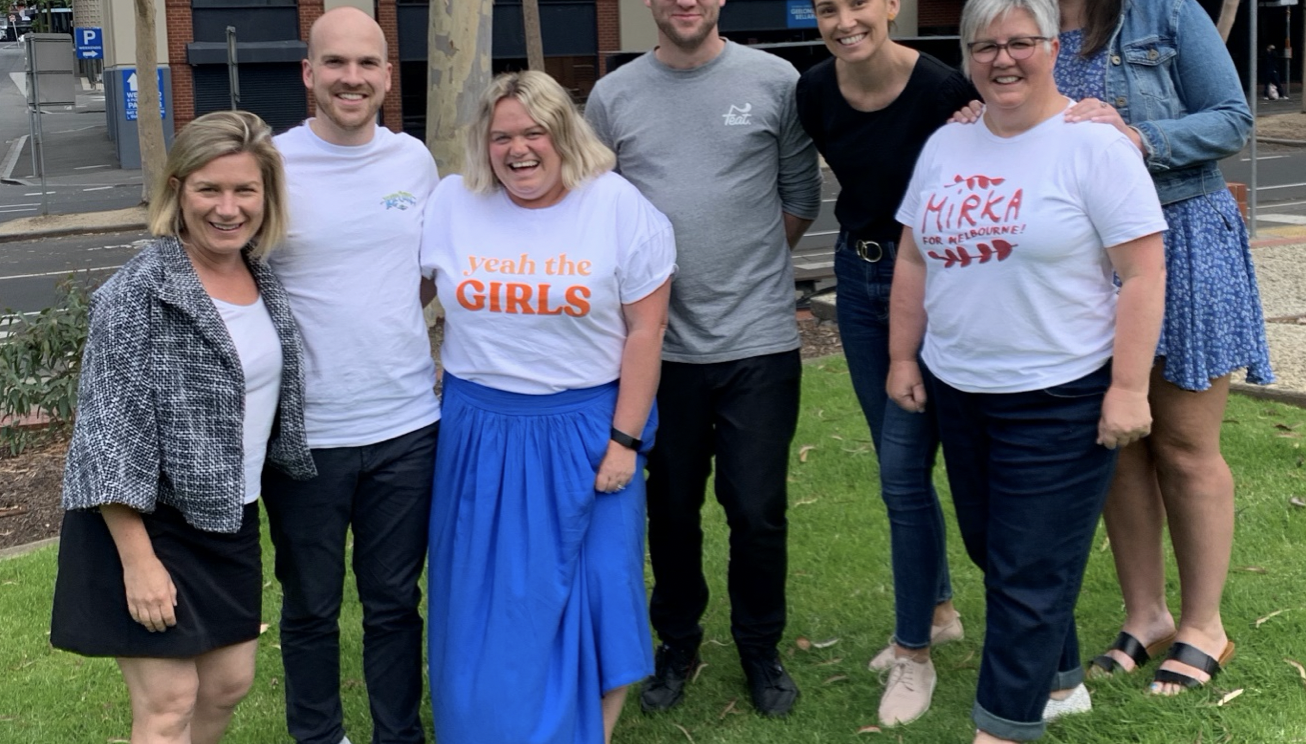Are you looking for ways to make your workplace more active?
Check out our most recent case study of a Geelong-based business who is having a positive impact on the lives of their employees by advocating the importance of physical activity.
Tourism Greater Geelong and The Bellarine developed a ‘health and wellbeing’ program which included encouraging employees to take up a new form of physical activity, and then providing a $200 individual subsidy for the financial cost of undertaking that new activity.
Industry: Tourism
Employees: 10-20
Location: Geelong CBD
“It’s been great to see the shift in mindset in the office. A good example is one of our employees who bought a new FitBit, which was subsidised through the Program.
Now, throughout the day, we will all hear a buzz from coming from the Fitbit, and this particular employee then gets up from their desk and walks three laps of the office”.
The anecdote described above is the exactly the kind of change Active Geelong’s Movement Movement is trying to make in workplaces around Geelong.
This one comes from Brendan Sanders, a Business Manager at Tourism Greater Geelong and The Bellarine, and a driving force behind the organisation’s new Health and Wellbeing Program for staff.
The program aims to improve the physical and mental health of its employees, and central to the initiative is an “Off-Site Fitness Subsidy Program”.
The simple idea is having a significant impact in changing behaviour among its 17 employees, with many undertaking forms of physical activity they have never tried before.
Under the program, employees are encouraged to take up any kind of physical activity – and then the organisation provides a $200 individual subsidy for undertaking this endeavour.
This has led to an explosion of new activity among the staff.
Aside from the employee who used their subsidy to purchase a Fitbit, other employees have found ways to improve their fitness, and importantly, have also brought others along for the ride.
They include one employee who started a lunchtime walking group, and another who started a netball team.
“We also have 50 and 60-year-old’s who are buying gym memberships for the first time,” Brendan noted.
“It’s been great to see how this program has rallied people together. A lot of the initiatives have not only had an impact on one employee, they have also helped their friends and families get more active as well.”
“We’ve seen more activewear in the office over the past six months than ever before.”
The physical activity subsidy is just one part in a wider framework aimed to support staff in many different ways.
Other parts of the program include:
- Offering sit-stand desks for staff.
- Providing access to healthier snacks by replenishing a ‘Fruit Box’ every week.
- Encouraging employees to complete charitable experiences and providing subsidises for any costs involved.
- ‘Mindfulness’ training with a trained mental health coach every six months on-site, as well as off-site mental health-related excursions four times a year.
According to Brendan, there has been one key aspect to implementing the program – engaging employees right from the start.
“We had a Think Box about how the program could work and we got our employees to make suggestions about what they wanted,” Brendan said.
“I think that’s why we have had such great take-up, because it’s not just one person driving it,” he said.
“We had a general idea of how things could work. But the program itself has actually sparked new ways of thinking and people are coming up with new ideas and initiatives all the time.”
Indeed, the best ideas have been those that could be matched to research and that also provide the greatest benefit to both the staff and the organization.
This has ensured the process has not been abused by employees and taken up in the spirit of which it was provided.
And there have been huge benefits for the organisation, too.
Leadership has noted an increase in productivity and a greater sense of team-work and camaraderie among employees.
“We’ve seen a real shift in work patterns,” Brendan said.
“People are moving a lot more; choosing to walk over and talk in-person rather than picking up the phone and speaking to someone on the other side of the office, which they would have done previously – little things like that,” he said.
“And it just seems the program has provided a licence to think more creatively and encouraged innovation. There is a lot more positivity and gratitude from the employees towards the organisation for the initiatives that we have put in place.”
So how did this all start?
Brendan said it came from the organisation recognising that it was in their best interests to provide staff with access to benefits, initiatives and programs that will “ultimately allow us to get the best performance from our employees and recruit well in the future”.
He added: “our staff spend a large portion of their day inside, at the computer, in the car or in meetings. We attend a lot of functions and enjoy our fair share of coffees.
“We’re professionals committed to our industry and the region. Unfortunately, that often means long hours and after-hours work.
“Research has proven that regular exercise keeps employees more energetic, motivated and happy when they are at work. This also helps improve brain function, which leads to better overall performance.
“So, with all that in mind, we decided that we needed to find ways to support our staff in maintaining a healthy work-life balance and initiatives that encourage employees to prioritise their physical and mental health.”
Do you know of an active workplace in Geelong? If so, we would love to hear from you – contact us at movers@activegeelong.org.au so we can spotlight more organisations who are joining our city’s growing Movementmovement.
